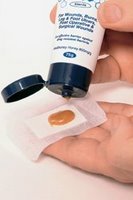 APIMEDICA 2006, October 13, 2006, Athens, Greece
APIMEDICA 2006, October 13, 2006, Athens, Greece
Presenter: Professor Peter Molan, University of Waikato, Honey Research Unit
Summary Points:
* Smith papyrus 2,600 – 2,200 BC: Grease-honey-lint compound used as wound dressing
* Dioscorides (c.50 AD) wrote: “Honey is good for all rotten and hollow ulcers.”
* Aristotle (350 BC) wrote of using honey to treat wounds.
* Honey as a wound treatment is being “rediscovered” as antibiotic-resistant strains of bacteria increase.
* 58 isolates of staphylococcus aureus from infected wounds were tested against representative honeys. Minimum inhibitory concentration (MIC): 2%-3% (v/v) for Manuka honey, 3%-4% (v/v) for pasture honey
* MIC values for clinical isolates for Medihoney:
20 strains MRSA 4%
28 strains nMRSA 4%
20 strains VRE 6-8%
30 strains Ps. aeruginosa 6-8%
11 strains Acinetobacter 6-8%
28 strains ESBL 6-8%
* Actions of honey besides antibacterial:
1. Creates a safe moist healing environment
2. Powerful anti-inflammatory action – soothes, aids healing, reduces exudate, stops scarring
3. Cleans wounds rapidly with no need for surgical debridement
4. Rapidly deodorises wounds
5. Does not stick to wound bed
6. Stimulates granulation & epithelialisation
* Positive findings on honey in wound care have been reported in:
1. 17 randomized controlled trials with 1,965 participants
2. 5 other clinical trials with 97 participants treated with honey 311 case studies
3. 16 trials on a total of 533 wounds on experimental animals
* Honey heals well only if it is kept on the wound.
* Honey, if held in place, is achieving better results than any modern pharmaceutical wound-care products can achieve.
Honey-Based Wound Treatment Products:
Advancis
HoneySoft
L-Mesitran Hydro
Apinate
MediHoney
Thursday, October 19, 2006
APIMEDICA Presentation: Treating Wounds with Honey
Subscribe to:
Post Comments (Atom)
No comments:
Post a Comment